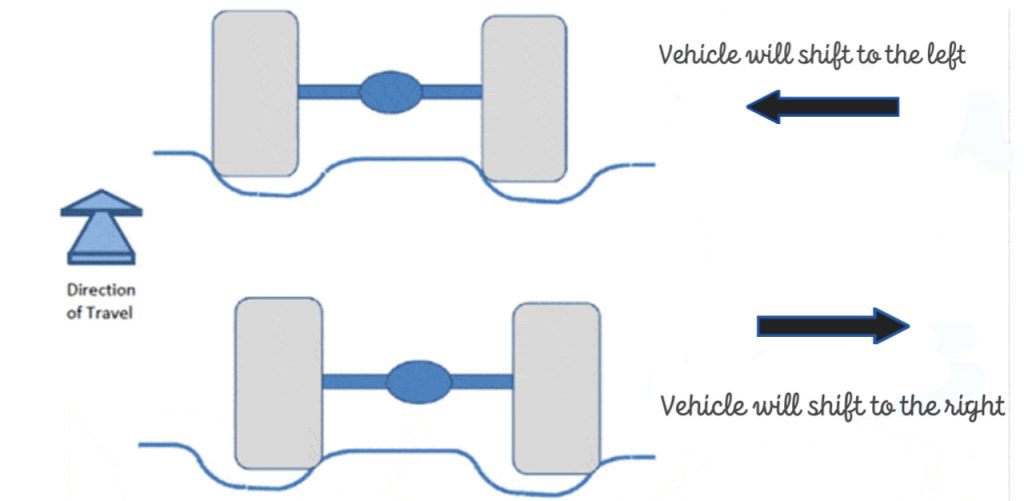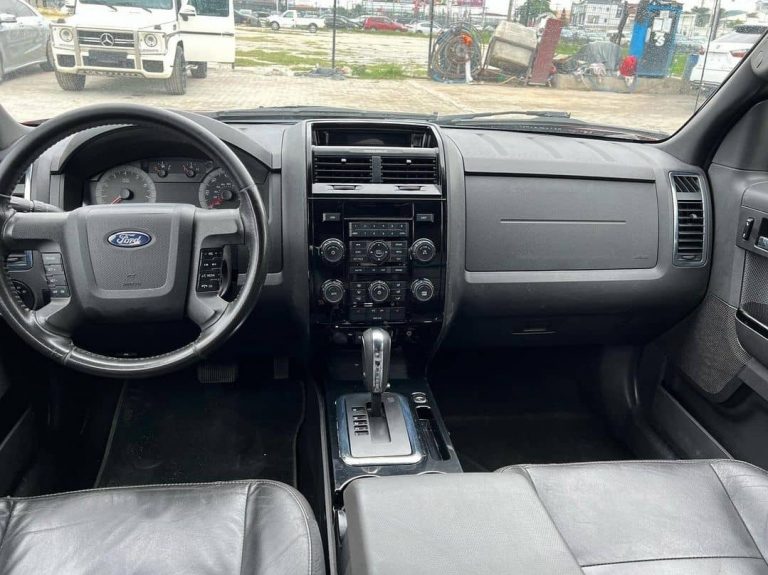One of the problems you might encounter while using your vehicles on the road is tramlining. It involves your car moving in a direction different from where you propelled it.
Tramlining makes moving an automobile in a straight line almost impossible due to the constant change of direction, which often accompanies frequent vibrations, especially on rough road paths.
In this article, you’re going to learn the meaning, causes, and how to prevent and fix tramlining from occurring while using your automotive.
What is Tramlining
Tramlining occurs when a vehicle follows contours and potholes on the road while in motion. Tramlining moves the car not conforming to the driver’s input. Instead, the vehicle follows the track of contours.

This is often experienced while driving on the road full of potholes, contours, and smooth surfaces. Also, bad or worn-out tires can significantly contribute to tire wandering, especially when making sharp turns on a bad road.
However, the effect might not be noticed on a slow vehicle. Nibbling at a very high speed can lead to damage or severe accidents.
What Causes Tramlining in a Car?
It’s essential to know every possible cause of a problem – tramlining in this case – to apply better solutions when facing it.
Here are some causes of tire wandering in a vehicle;
- Worn out tires
- Poor Wheel alignment
- Over-inflated tire
- Tire tread wear
- Wider Car tires
- Tread Design
- Quality of Tires
- Old suspension system
Now, let’s briefly examine the possible causes of tramlining on a vehicle.
1 . Worn-out tires: Running a car on worn-out tires will increase the possibility of experiencing tramlining while driving.
2. Poor Wheel Alignment: a poor Wheel alignment will leave your tires loose, making your vehicle defy the steering input while following contours and potholes. Also, your tires might lose if not attended to on time.
3. Over-inflated tires: Over-inflating your vehicle tire above the manufacturer’s recommendation will likely make you feel every bump on the road, thereby increasing the chance of tramlining. Also, your tires might burst while driving, making the road unsafe for other users.
4. Tire thread wear: uneven tread wear on a tire will increase the chances of the vehicle experiencing tramlining.
5. Wider Car Tires: Cars with wider tires might further experience tramlining due to increased contact with the road’s surface area.
6. Tread Design: This is similar to the above cause; tires with more expansive threads tend to experience more contact with the road surface area, thereby increasing tire wandering.
7. Quality of Tires: A low-quality tire will not be able to conform to road unevenness and absorb contact with potholes, thereby increasing the chance of experiencing tramlining. Low-profile tires are recommended on bumpy roads.
8. Old vehicle suspension system: An old or faulty suspension system will automatically forward all the vehicle’s weight on the tires, thereby causing tramlining.
These are some of the notable causes of tramlining in your car.
So, after visually inspecting any part of the area of your tires, wheel alignment, and suspension system, you can implement any of the below repairs.
How to Prevent and Repair Tramlining
Adhere to one or all of the below to prevent and fix tramlining on your vehicle.
- Avoid over-inflating or under-inflating your car tires, and maintain constant tire pressure.
- Initiate regular wheel alignment to repair any worn-out ball joint or bearing (negative or positive camber)
- Run habitual maintenance on your vehicle’s suspension system
- Avoid modifying the wheelbase of your car
- Don’t use tires with reinforced sidewalls on your cars
What are the symptoms of Tramlining
Here are a few signs you might notice if your vehicle ever runs into the tramlining problem.
- The vehicle doesn’t follow the driver’s input
- Irregular movement (Bumpy ride)
- Car shakes/vibrates on the road
- Increased wear and tear of tires
- Bent steering wheels are a case of a bad wheel alignment.
- That’s it.
Tramlining FAQs
Can Worn tires cause Tramlining?
Although not the leading cause of tramlining, a worn-out tire can further increase the effect of tramlining. Also, new tires will continually wear out without identifying and fixing the leading cause of nibbling.
Why do I feel every bump on the road?
An overinflated or underinflated tire can cause you to feel every bump or contour on the road due to excess or no tire pressure.
What is Positive and Negative Camber?
This applies to wheel alignment; a positive camber occurs when the top of the wheels drifts away from the axle (bottom). Meanwhile, negative camber occurs when the axle is farther out than the wheel.
Conclusion
Tramlining is a minor issue that should be resolved as soon as possible to avoid accidents on the road.
The significant causes of tramlining include bad tires, faulty wheel alignment, and a bad suspension system in your car.
Follow the above instructions to prevent and repair tramlining on your vehicle.
As an Amazon Service LLC Program Associate, V. Auto Basics earns from qualifying purchases. See Our Affiliate disclaimer.
